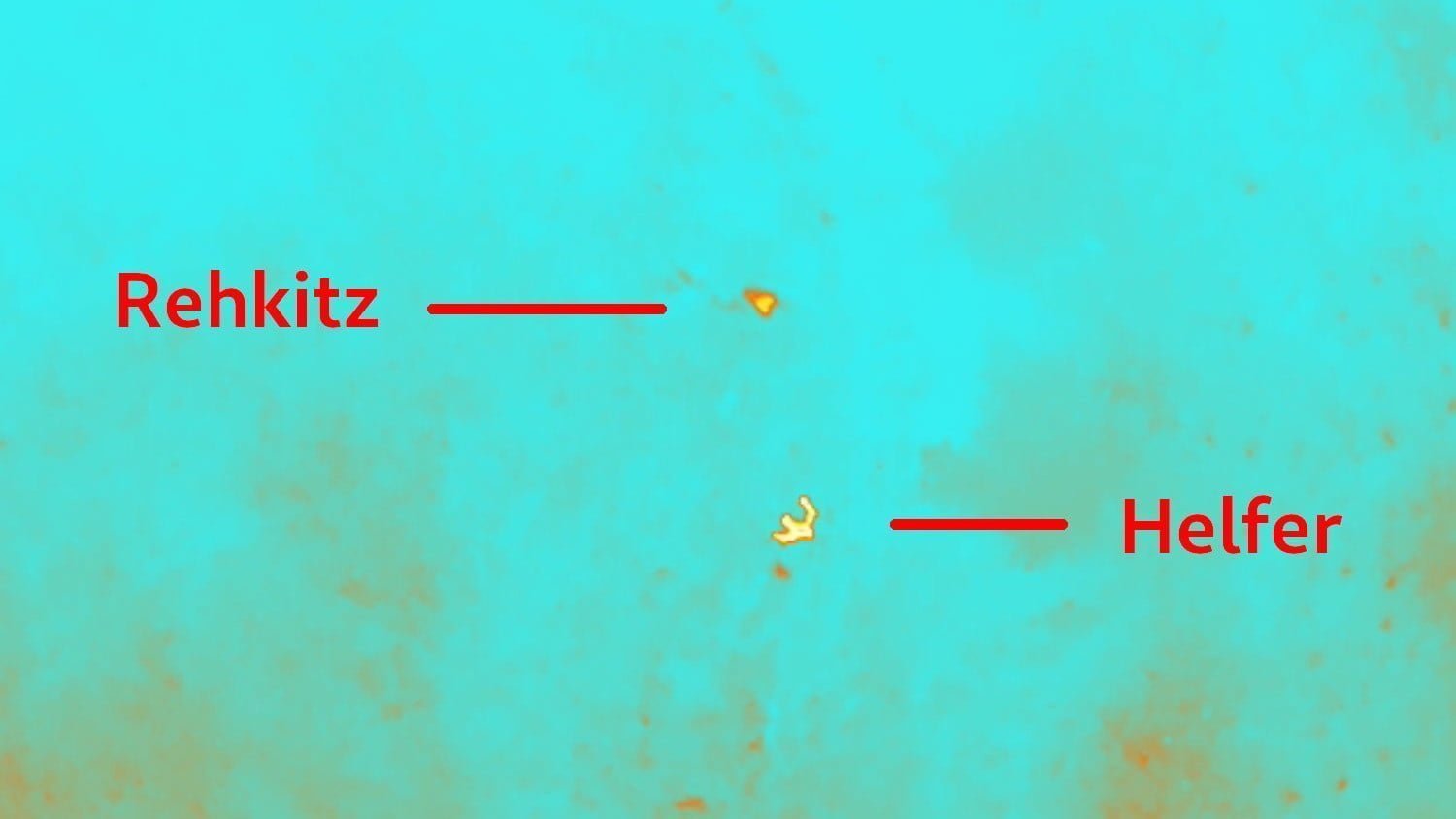Your shopping cart is currently empty!

Rescuing fawns with a thermal imaging camera and drone
The German Wildlife Foundation estimates that around 500,000 wild animals are killed every year in Germany by mowing grassland. Of these, 90,000 are young fawns alone, which, following their instinct, lie flat in the tall grass and hope that the danger will pass. Unfortunately, however, the mower does not disappear, but systematically scans the meadow until it inevitably encounters the animals. However, these encounters are often not immediately fatal, but only severely maim the animals. Minutes to hours later, the animals succumb to their injuries.
The Animal Welfare Act obliges farmers to take measures against such mutilations and killings. There are various ways to prevent this: starting with scaring the animals away, searching with dogs and various scaring mechanisms directly at the mower.

A new technique for searching for and finding animals is made possible by combining modern drone and thermal imaging technology. The area to be mowed is systematically flown over with a drone before sunrise to find animals lying in the grass. Once these have been located, there are various ways to protect the animal. Often a helper carefully carries it out of the grassland where the young animal is waiting for the doe. Alternatively, the animals can be kept safely in a box until the mowing work has been completed.

Last year, I tested this technique on the island of Rügen in cooperation with the Rügen Hunting Association. As part of the pilot project, a total of 558 hectares of grassland were flown in May and June 2019 and 82 fawns were found. According to all those involved, this search technique is much more efficient and faster, especially compared to searching with dogs. After consultation with the farmers, only 3 animals fell victim to the mower - all of them were already so agile that they ran back into the meadow on their own after the morning search operation.

Due to its great success, I will be flying on the island of Rügen again this year. Over the winter, I optimized and further developed the drone on my own and everything is ready for take-off. As last year, the work is financed 100 % by donations and is free of charge for the farmers. Even though the majority of the required amount has already been raised, there is still some money missing. The Jagdverband Rügen e.V. and all fawns on the island are grateful for any donations received in the coming weeks:
Hunting Association Rügen e.V
IBAN: DE31130910540006556450
BIC: GENODEF1HST
Pommersche Volksbank e.G.
Purpose: "Against mowing death"
Appeal for donations on the hunting association's website:
http://www.kjv-ruegen.de/
More information on the death of wild animals can be found on the website of the German Wildlife Foundation:
https://www.deutschewildtierstiftung.de/naturschutz/reh-stoppt-den-maehtod

A note for all infrared photographers: the thermographic camera used is not based on a normal photo camera. Normal cameras cannot be converted to record thermal images. The sensor of such cameras is not based on silicon and the lenses are not made of glass.
